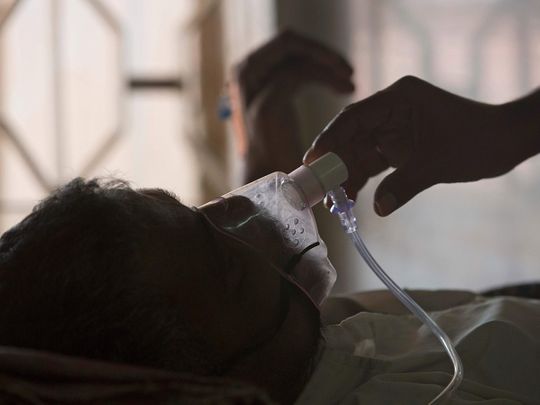
World TB Day, observed a few days ago, serves as a stark reminder of the ongoing struggle against tuberculosis (TB), a disease vividly depicted in Charles Dickens’ novel “Bleak House.” In this classic work, Dickens portrays the tragic character of Jo, a young street sweeper who succumbs to TB, reflecting the widespread and deadly nature of the disease in the 19th century.
Despite the passage of time and medical advancements, TB remains a significant public health challenge, with high incidence rates in many regions. The day commemorates Dr. Robert Koch’s 1882 discovery of the TB bacterium, emphasising the long history of this global scourge. Just as Dickens highlighted the social injustices and poor health conditions of his time, World TB Day reminds us of the persistent battle against TB and the need for continuous efforts in public health to eliminate this enduring threat.
According to the World Health Organisation’s World TB Report 2023, in 2022, the global number of people falling ill with TB continued to rise, reaching an estimated 10.6 million, up from 10 million in 2020. This increase reversed the previous declining trend, with a notable rise in TB incidence rate by 3.9% between 2020 and 2022. Indonesia, Myanmar, and the Philippines were significant contributors to this increase.
The rise in TB cases, following a period of decline, aligns with projections and reflects the impact of Covid-19-related disruptions to TB services, which likely increased TB transmission due to undiagnosed and untreated cases. Regionally, the Americas, South-East Asia, and the Western Pacific saw increased TB rates. In contrast, in Africa, the rate of increase was contained, possibly due to lesser disruption from the pandemic.
Fight against TB
Over the last ten years, TB has been the deadliest infectious disease worldwide, with more than 1.65 million people dying each year from it between 2010 and 2019. A significant number of these deaths, over 363,000 annually, were among people with HIV. The relationship between TB and HIV is particularly strong in Africa, where HIV has fuelled TB outbreaks, making it challenging to measure the disease’s spread and the effectiveness of treatments. In 2020, 8% of new TB cases and 14% of TB-related deaths globally were in people with HIV, but in the WHO African region, these numbers rose to 24% and 31%, respectively, highlighting the impact of HIV on TB in this area.
Drug-resistant TB is a significant public health concern, especially affecting the poor in low- and middle-income countries. Annually, around half a million people globally fall ill with drug-resistant TB, with only one-third accessing quality care. Treatment for drug-resistant TB, which involves second-line drugs, is more expensive and has more adverse effects than treatments for drug-susceptible TB.
Despite advances in TB treatment, including WHO-recommended all-oral regimens, the treatment coverage for multidrug-resistant and rifampicin-resistant TB (MDR/RR-TB) remains low, with global coverage at 43% in 2022. Treatment coverage varies significantly, particularly in the high burden countries, with some countries achieving less than 20% coverage. This situation exacerbates the economic and social costs faced by those with the disease, making it a pressing issue in the fight against TB in poorer regions.
To effectively combat tuberculosis (TB), it’s crucial to implement a multifaceted strategy. Accurate estimation of TB incidence is vital for understanding the scope of the problem and allocating resources effectively. Strong TB disease surveillance systems are essential to monitor the spread of the disease, detect outbreaks, and evaluate the effectiveness of control measures. Ensuring that patients adhere to their medication regimen is critical to prevent the development of drug-resistant strains of TB and to cure patients of the disease.
Achieving universal health coverage
The Copenhagen Consensus study highlights a significant opportunity in the fight against TB, suggesting that with an additional $6.2 billion annually, the world can drastically improve TB diagnosis and treatment adherence. This investment is below the $7-8 billion increase pledged by the UN in 2018 but has not been met due to declining spending.
With this funding, 95% of TB patients could be diagnosed and supported through their treatment, potentially with incentives or digital tools like apps. This approach aims to provide access to preventive and proper treatment for millions, reducing TB deaths by 90% and preventing 27 million deaths by mid-century. The anticipated economic benefit of this investment is $3 trillion, representing a return of $46 for every dollar spent, highlighting the cost-effectiveness and substantial impact of increasing funding for TB management.
Addressing the global TB challenge necessitates a renewed commitment to meeting and exceeding set targets. Between 2018 and 2022, only 55% of the five-year target for treating drug-resistant TB (MDR/RR-TB) was achieved, with a notable shortfall in treatment for affected children. Key nations contribute significantly to this treatment gap, emphasising the need for enhanced diagnostic and treatment access in these regions. Progress in treatment success rates, particularly for MDR/RR-TB, shows potential for improvement yet underscores the urgent need for comprehensive and scalable strategies in TB management and prevention.
Preventive measures, including administering the BCG vaccine and TB preventive treatment, have shown effectiveness yet remain below the desired global coverage. The funding shortfall in low- and middle-income countries (LMICs), which bear the brunt of TB cases, highlights the critical gap between required and available resources for combating TB.
Achieving universal health coverage (UHC) and addressing the broader determinants of TB necessitate significant increases in investment. The path forward involves mobilising sufficient funds and ensuring these resources are efficiently utilised to bolster TB prevention, diagnosis, and treatment efforts, ultimately striving for the eradication of TB.
Aditya Sinha is Officer on Special Duty, Research, Economic Advisory Council to the Prime Minister. Views Personal.








